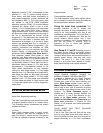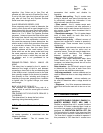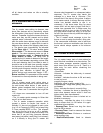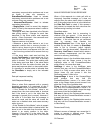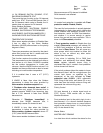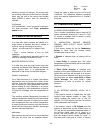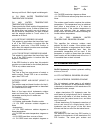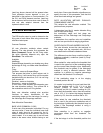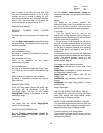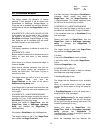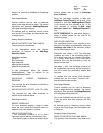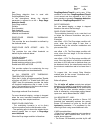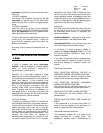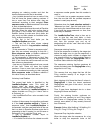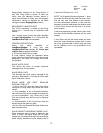
Date: 8-4-2010
Revision: 0
Form: 2396
Lead Lag burner demand will be present when
Frost protection burner demand is true, as
described in the section on Frost protection. For
the CH, and DHW demand sources, Lead Lag
burner demand will be true when one of these is
true and also setpoint demand from the
hysteresis block is true.
4.7.9 RATE ALLOCATION
The PID block's output is used to determine the
firing rate of each slave Sola using various rate
allocation techniques.
Common Features
All rate allocation methods share certain
features. The rate allocator first generates the
Slave Command. Except for the Firing state,
the value ultimately depends only upon the
SlaveState. The values are:
Available
AddStage
SuspendStage depending on whether any other
slave stage is firing, no matter what SlaveState it
is in.
Firing
OnLeave - same as SuspendStage
This ensures that when a slave returns and is
already firing, it will remain firing until the master
decides what to do about that, or if it is not firing
it will remain off.
Disabled - same as Available
Recovering - same as Available
It next runs a rate allocator that depends upon
the rate allocation method. This routine fills in
the modulation rate for all Firing boilers.
Each rate allocation method also provides
functions to return identification of the
modulating stage and the last stage, for use by
the Add-stage and Drop-stage methods.
Rate Allocation Parameters
BASE LOAD COMMON: 0-100%
If set to zero, this parameter is disabled. For any
non-zero value, it uses the individual base load
rates of each slave to be ignored by the LL
master's routines and this common value to be
used instead. It is an easy way to set all base
loads to the same value, without having to set
each slave. Some rate allocation algorithms may
specify the use of this parameter, and that the
slave base load settings are ignored.
RATE ALLOCATION METHOD: PARALLEL
COMMONBASE LIMITED
This selects the rate allocation method. This
performs three purposes:
it determines how the LL master allocates firing
rate to each active stage,
the modulating stage and last stage are
determined for the Add-stage and Drop-stage
methods,
it determines the overflow rate and underflow
rate and can provide this to staging algorithms.
OVERFLOW RATE AND UNDERFLOW RATE
The rate allocator knows the rate assigned to
each stage, and the requested rate, and thus
can determine the difference between these.
This difference has two forms: overflow (used by
Addstage methods), underflow (used by Drop-
stage methods).
When asked for rate overflow the threshold that
is used is the upper limit of the modulating stage
per the current rate allocation rules. Additionally
this threshold may be shifted if the Add-stage
method is using a dRate/dt behavior. Rate
overflow is a positive or negative percentage
offset from the threshold. For example:
If the modulating stage is at the staging
threshold position but the
LL master is not asking for more heat than this,
then the overflow rate is 0%. If it is at this
location (limited) or above this location
(unlimited) and the LL master is asking for 10%
more than the threshold value, then the overflow
rate is 10%. If it is below the staging threshold
position by 5%, then the overflow rate is -5%.
When asked for rate underflow the threshold
that is used is the minimum modulation rate of
the last stage. Additionally this threshold may be
shifted if the Dropstage method is using a
dRate/dt behavior.
Rate underflow is a positive or negative
percentage offset from the threshold. For
example:
If the last stage is at the threshold position but
68



